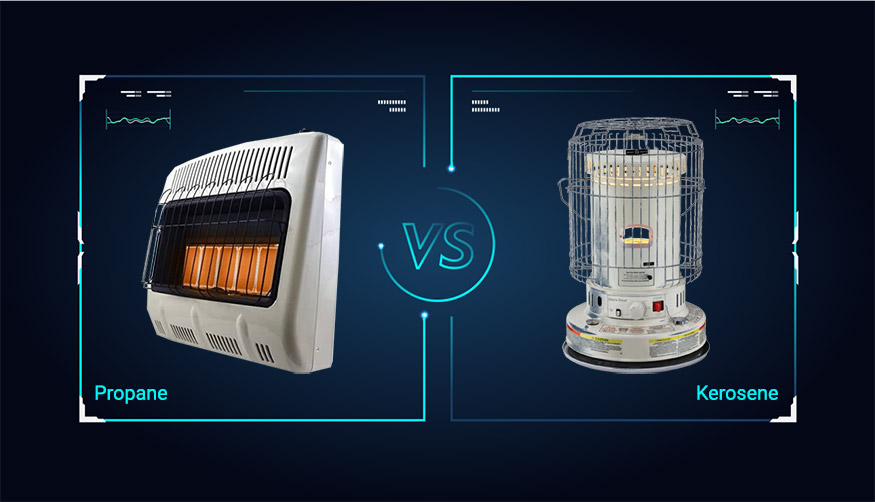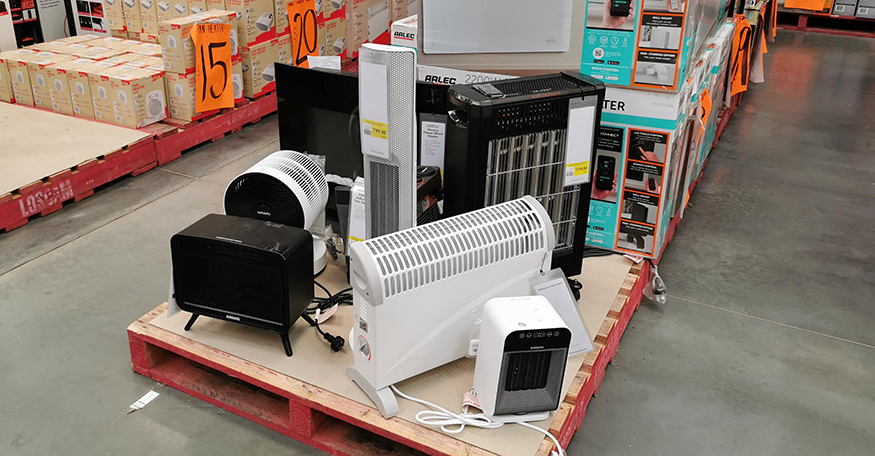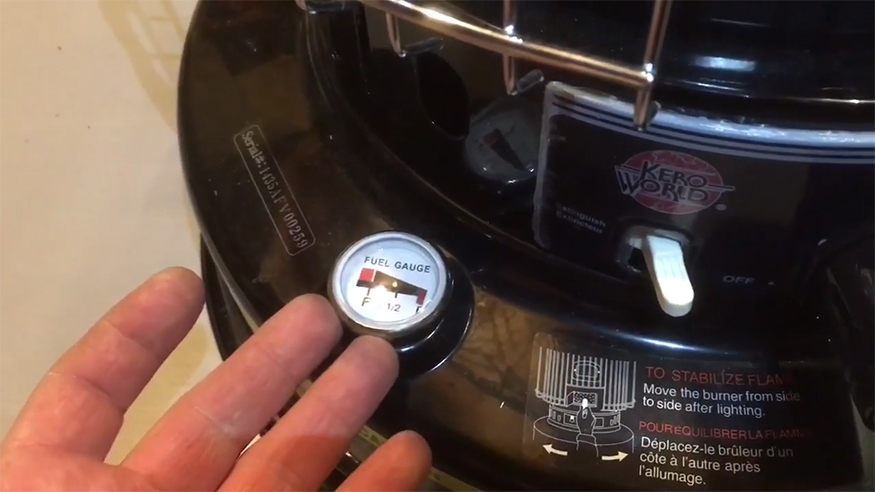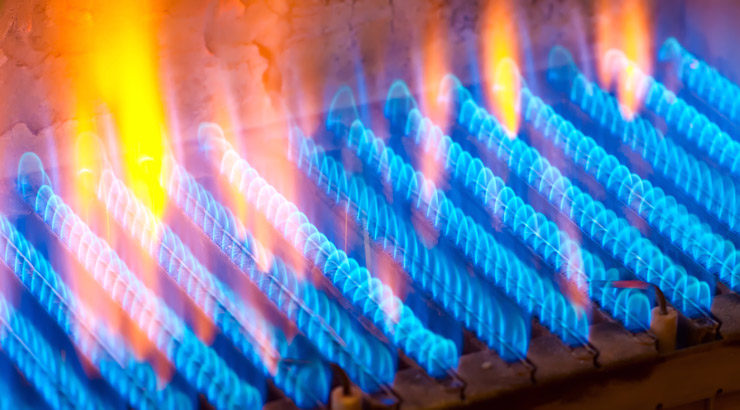In an age where we carry access to the cumulative knowledge of humanity around in our pocket, it is quite common to take a lot of things for granted. Traditionally, this manifests in flicking a wall switch and lighting up a room without a second thought as to how it happens or where it comes from.
But what happens when the power goes out during the cold months? How do you keep your home warm and habitable and your family safe? Many people opt for a supplemental or emergency source of reliable and safe heating, fueled by either kerosene or propane.
Both propane and kerosene heaters are great ways to provide heat without relying on electricity. They can both be very effective at heating enclosed spaces, but each has its own pros and cons.
How do you figure out which one will be the best fit for your needs? Just keep on reading, we have already done all the work. We have done a deep-dive into the ups and downs of each, and why one or the other may be right for you.

Propane vs Kerosene Heater Head To Head
| Kerosene | Propane | |
| Heater Price | $50-$200 | $50-$200 |
| Fuel Price | $21.28 per million BTU | 17.81 per million BTU |
| Portability | Portable Units Available | Portable Units Available |
| Running Time | Avg. 10hr/gal Limited Tank Size | Avg. 10hr/gal Unlimited Tank Size |
| Safety/Health Concerns | Must be supervised when operating | If a ventless model is used, can be run while sleeping |
| Maintenance | Wick and burning assembly cleaning | Periodic minor cleaning |
| Other Considerations | Availability of fuel, the cost may be prohibitive in some areas | Wide availability |
Heater Price

When looking at the variety of heaters that are available on the market, there is a large amount of overlap in both BTU capacity, heating area, and price on both the kerosene and propane sides.
Depending on how many bells and whistles you want, you are looking at heater costs from about $50 for bare minimum portable emergency space heaters, to around $200 for a decent 20,000-30,000 BTU heater that will likely come with either the option to wall-mount or use as free-standing.
Fuel Price
The Federal Register lists the current price for several home heating commodities, propane and kerosene among them.
Propane Prices
Propane is listed at a current price of about $17.81 per one million BTU.
One gallon of propane has approximately 91,500 BTU.
The usual twenty-pound cylinders that you would see connected to an outdoor gas grill hold 5 gallons of propane, so to put it into a practical perspective this means your average 30,000 BTU heater will consume about a third of a gallon of propane per hour, the tank being fully exhausted after approximately 15 hours of run time.
Common propane cylinders that are empty can be swapped out for full ones at nearly any major gas station. Areas that see more propane-based home heating will also be able to find locations to refill their tanks.
Kerosene Prices
Kerosene has a current price of approximately $21.28 per one million BTU.
A gallon of kerosene contains approximately 131,000 BTU.
Small 10,000 BTU space heaters will have a small fuel tank of between 1 and 1.3 gallons, so many of them will run for over 12 hours on one tank fill.
Kerosene can be obtained from locations like hardware stores, general stores, and some gas stations, just be sure to check that the grade you need is available. If you find that fuel grade is available, you will be able to pump it into a fuel jug just as you would with gasoline. A kerosene container will be blue, however, not red.
Propane is Cheaper
When merely considering the fuel price, propane is the clear winner here. Not only is it more widely available, but it is several dollars cheaper per million BTU than kerosene. Even with fluctuations in the market, unless there are major influencing factors, propane will remain cheaper for quite some time.
Related Article: Cost-effective ways to heat a house
Portability
Portability can be an important asset when considering heaters for use, for example, in emergency cases. Other circumstances where portability is valuable is seasonal and sporadic use.
If you live in an area where there is only a period of perhaps three to six months per year where it may be used, then you probably do not want to have it taking up space or permanently installed somewhere.
The converse can also apply though. If you are looking to heat an area that requires heating more often than not, or if you simply do not want to worry about a portable heater and want something that can be mounted and used year-round if needed.
The truth is, there are great options for both needs. There are units that are highly portable and can even work with the small one-pound propane bottles. There are also larger units that have the option to hang on a preinstalled wall bracket or utilize an optional foot kit so that it can be positioned as needed.
If portability is the decider, then it is definitely a draw.
All heaters whether propane or kerosene need to be stationary while operating so that the anti-tip mechanisms function properly. But when you are looking at small emergency heaters that can heat up to 1,000 feet in some cases, they are all going to be easily moved from location to location or retrieved quickly from storage.
Running Time

Both kerosene and propane heaters can run for quite some time, often for well more than 12 hours if properly maintained and fueled. As well as it runs, however, the run time will ultimately depend on the size of the fuel tank.
Kerosene Heater Runtime
Kerosene heaters are often limited by the fuel reservoir that the heater is constructed with.
They can be easily refueled, but refueling will be needed more often obviously, as they cannot be connected to larger fuel tanks.
Propane Heating Runtime
Propane heaters have a slightly lower BTU energy content, but it makes up for it by the slight advantage it gains in fuel economy from the phase transition between its compressed liquid form into the gas form that is burned. The ability to easily connect the heater to a large fuel reservoir like a large 100-pound cylinder, or even the home propane plumbing system, can be invaluable when trying to be more self-reliant in the event of grid power loss or other emergency scenarios.
Propane Runs For Longer
With these things taken into consideration, the clear winner is propane. Kerosene can be refilled quickly, but it cannot connect to or utilize directly this larger fuel store.
Propane, on the other hand, can be connected to a small one-pound bottle from the camping store for a few hours of life-saving warmth, or a 20-pound cylinder from your grill to keep things warm for a few days at most, or even a 100-pound cylinder that will last you for weeks, or a home system that will have you toasty for most of a season.
Safety/Health Concerns
Ventless indoor propane heaters have low oxygen shutoffs and do not have the risk of carbon monoxide build-up that vented units do. Additionally, since the propane is being stored outside, they have no notable health or safety risks.
Kerosene heaters should not be operated when sleeping, as they can produce soot and carbon monoxide when in a low oxygen condition.
Care should also be exercised when refilling the fuel so as not to get any on your hands or surroundings.
Maintenance
Maintenance for a kerosene heater is going to need periodic replacement of the wick. This is what will keep the kerosene moving from the tank to the burning end.
If a heater is running for ten to twelve hours a day, not only will you need to burn a wick dry at least weekly, but you will need to replace them sooner than with only short use times. You will also need to occasionally clean the burning appliance body and reassemble it to prevent carbon buildup.
Propane heaters are relatively maintenance-free. Every so often, however, you will want to turn off the supply and use a fine wire brush to clean the surface of the igniter, gas jet, and thermocouple. This will keep carbon buildup from accumulating and hampering the operation.
Other Considerations

Can I keep my heater fuelled up year-round, just in case?
Whether you have a propane or kerosene heater, you should not keep it connected to its fuel source all year if it is not being used and cycling that fuel. Some of the reasons for this include safety and fuel preservation. Keeping fuel outside of its approved storage container if it is not being used is a fire hazard, any way you look at it. If you don’t need it, don’t fuel it up.
Keeping a viable fuel in an appliance with no intention of immediate use can cause damage or fouling of the burner or combustion device as well. Putting fuel into an appliance and not using it for half a year or so can cause particulates to accumulate or to gum up the carburetor or injector.
This does not generally apply to propane appliances that can remain connected to their fuel indefinitely. The exception to this being heaters that use disposable bottles, as once those bottles are punctured they will eventually bleed down to empty.
Is fuel easy to store?
Both propane and kerosene are fairly simple to store, though there are some things to consider when storing for either short or long term.
Propane is stored in its own container, obviously. You do not need to worry about ways to store propane, but you will need to have a secure location outside to store your propane tanks. The will emit fumes periodically, and thus propane cannot be safely stored indoors.
This is a hard and fast rule, at no time is it safe to store propane in an enclosed space or home. Outside or well ventilated non-living space only.
Kerosene can be stored indoors, but it must be stored in its securely closed plastic jug. Kerosene has fumes as well and poses a small fire risk when open, but the specially-designed jugs that it is sold in mitigate that danger by keeping the vapors confined until it is opened during the process of refilling the fuel tank on the heater.
While kerosene can be stored indoors, it should be kept in a cool and dry place away from any source of heat, and away from children.
Is fuel readily available?
This is going to depend very highly on your regional market, the demand, and how prevalent it will be as a result.
In most regions, due to popularity and availability, propane will have a clear edge. In most areas, you can take the tanks commonly found on gas grills and exchange them at a local gas station in moments.
In rural areas, particularly the midwest and the south, the reliance on propane is such that there is a wide variety of places to not only exchange empty cylinders for full ones but get empty cylinders refilled as well. This allows tanks of varying sizes to be quickly filled and ready for use.
The heating oil market is more limited, but if you are in an area that relies on it heavily, you can reap the benefits of cheap kerosene. You will be able to recognize areas that are conducive to kerosene use by seeing it commonly available at its own pump in local gas stations, seeing it at hardware stores in 3 or 5-gallon jugs, and of course seeing a ready supply of the items needed to maintain kerosene burners, like wicks.
Conclusion
When it comes down to the final choice, it will depend greatly on your needs and the general availability of kerosene as a fuel source. If you are in an area where kerosene is cheap and easily obtained, then that might be the best option for you, the heat output of kerosene can be just what you need to take the chill out of a workshop or big living area.
If you do not live in an area where kerosene is cost-effective to use, then propane is going to be your safe bet. Not only is it very financially manageable, but it is found in abundance.